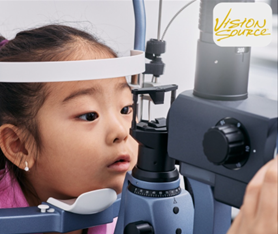Pediatric Eye Care
Vision develops rapidly starting at birth and is tied to many developmental milestones, such as hand-eye coordination and reading. While there may be some obvious signs of visual disorders, many vision problems may remain undetected without the assistance of an optometrist. Dr. Murzynski specializes in pediatric eye care and is always accepting new patients.
Our office provides eye care to ALL ages!
The American Academy of Optometry recommends a child’s first eye exam at 6-12 months of age, a second exam around age 3, and before school.
Vision screenings at school and pediatrician offices do not replace the need for a comprehensive eye exam! Many children pass screenings, but there are vision or ocular health problems that are missed!
Is your child having trouble seeing?
Some symptoms are more obvious, like squinting or holding reading materials very close. But often the early signs are subtle and can even be misdiagnosed.
Your child may be experiencing a vision problem if he or she does any of the following:
- Avoids reading and close-up work like coloring or doing puzzles
- Seems to work slow or not understand the task
- Complains of fatigue or headaches
- Has a short attention span or seems distracted
- Covers one eye or tilts head when focusing on something
- Shows sensitivity to light
- Exhibits difficulty with coordination
Common eye disorders in children
Strabismus (“Crossed Eyes”) is when the eyes do not align properly.
Amblyopia (“Lazy Eye”) is when poor vision in one eye results in the stronger eye remaining focus while the weaker eye drifts. It usually occurs before the age of eight. Infants born prematurely or with low birth weight are at greater risk.
Refractive errors cause blurry images due to the shape of the eyeball or lens. These common conditions are easily treated with glasses or contact lenses. There are three types of refractive errors:
- Myopia or nearsightedness is good close vision but poor distance vision.
- Hyperopia or farsightedness is poor up-close vision. Distant objects can easily be seen.
- Astigmatism is imperfect vision at any distance.